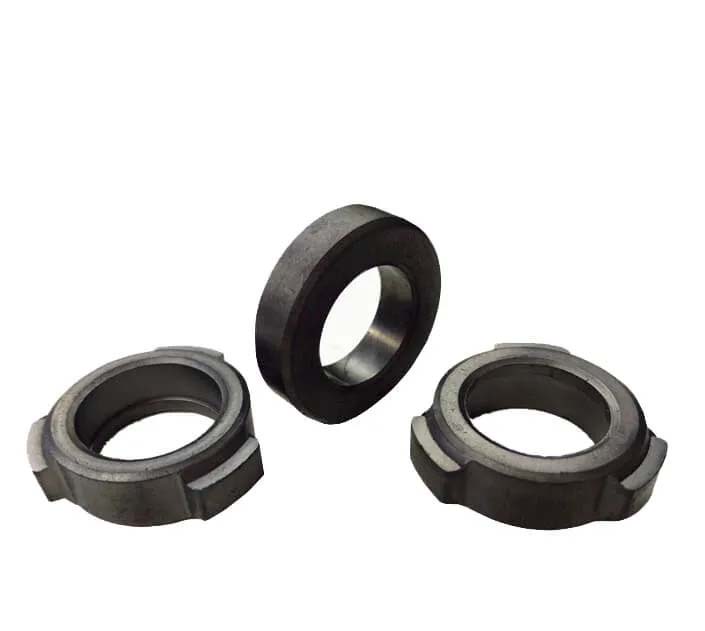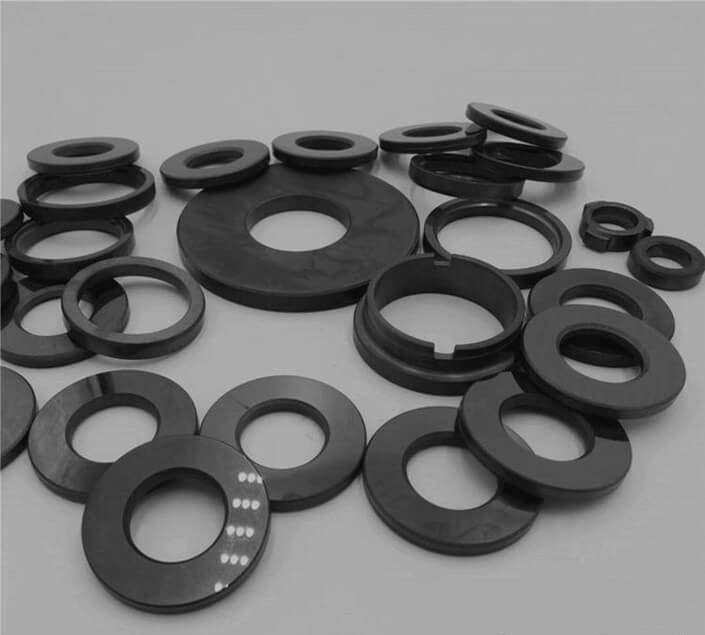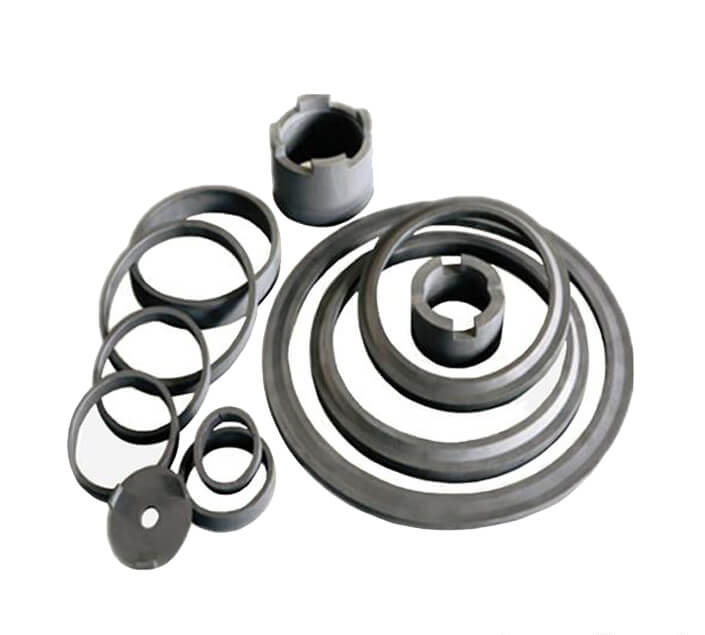Introduction SSIC Silicon Carbide Mechanical Seal
SSIC Silicon carbide mechanical seal is a kind of silicon carbide product produced with silicon carbide material. Silicon carbide mechanical seal has heat resistance, according to different process, the performance of heat resistance is not the same. The reaction-sintered silicon carbide seal ring can be used at 1300, while the pressure-free sintered silicon carbide seal ring can reach 1600.
Silicon carbide mechanical seal manufacturing process is: raw material processing – molding – sintering – grinding – assembly.
Ssic mechanical seal is the most versatile friction material in mechanical seals.It has strong chemical resistance performance, high mechanical strength, good wear resistance, high temperature resistance, good self-lubrication, light weight, low coefficient of thermal expansion, high hardness, good dimension at extremely high temperatures , strong corrosion resistance and high elastic modulus, long service life and other characteristics.Applicable to the production of various mechanical rings,bearings,bushings and other friction materials.Sic mechanical seal are widely used in petroleum,electric power,light industry,aerospace,automotive,paper and sewage treatment,chemical pump and its rotary machinery and other fields,and paired with carbon graphite,sic mechanical seal has the smallest friction coefficient. It can be used as a high-parameter mechanical seal.
Characteristics SSIC Silicon Carbide Mechanical Seal
The detailed manufacturing process is as follows:
- Raw material processing: determination of specific surface of SiC raw materials with different ball grinding time and ball ratio.
- Molding process: dry compression molding and isostatic compression molding are adopted. The former is suitable for products with simple shape and large batch, while the latter is more suitable for products with small quantity and complex shape.
- Hot pressing process: the process combining pressure and sintering is called hot pressing. Non-pressure sintering process: the formed silicon carbide blank is sintered at high temperature under protective gas in the furnace, which is called non-pressure sintering.
- Grinding: silicon carbide is a hard and brittle ceramic material, in order to prevent the product edge collapse Angle, it is necessary to make sharp Angle blunt treatment.The surface roughness of the sealing end face can be achieved only by selecting appropriate abrasive and particle size, strictly controlling grinding speed and necessary tooling conditions.
- Assembly process: in addition to the overall structure of the silicon carbide sealing ring, a large number of hot sleeve mounting structure is adopted, and the ring seat material mounted with the silicon carbide sealing ring is mainly made of chin alloy.
Since silicon carbide is a highly covalent nonoxide material, the ionic properties of the si-c bond are only 14%.The high stability of si-c bond, on the one hand, contributes to the high melting point, hardness and chemical inertness of SiC, on the other hand, results in the rather low diffusion rate during sintering. Only with the participation of additives, control the purity and fineness of raw materials, through pressure or in a specific atmosphere to make it sintered.
Technical Data Sheet of SSIC Silicon Carbide Mechanical Seal
| Technical Data of Alfa Grade Sintered Silicon Carbide | ||
| Property | Unit | Data |
| Volume Density | g/cm³ | ≥3.15 |
| Indicated Porosity | % | <0.2 |
| Hardness | HRA | 92-94 |
| Bending Strength | MPa | ≥400 |
| Compressive Strength | MPa | ≥2200 |
| Elastic Modulus | Gpa | 400 |
| Thermal Conductivity | W(m·k) | 120-150 |
| Purity | % | ≥99 |
| Coefficient of Heat Expansion | 1·10^6 m/k | 4.0 |
| Maximum Temperature | ℃ | 1650 |
| Resistivity | Ωcm | 5×10^6 |
Related Products:
This post is also available in: Arabic French German Indonesian Italian Japanese Korean Portuguese (Portugal) Russian Spanish















